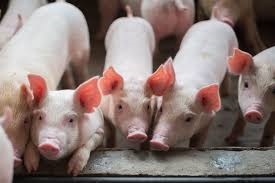

Weaning and the transition to the early nursery stage are the most challenging times for piglets. Minimizing stress during those first few weeks away from the sow will improve a piglet’s odds of staying healthy. A good environment allows pigs to grow to the best of their genetic potential. You need to start with healthy pigs in the nursery, or the chances of them reaching their genetic potential decrease significantly.
Management factors including longer fill times and having pigs of varying age and disease status in the same barn or site make it more difficult to maintain healthy pigs from farrow to finish. But staying focused on key animal husbandry basics and being proactive in the nursery are good ways to minimize threats to overall animal welfare. Animal welfare involves more than how animals are treated or handled. It includes their health, environment and the biosecurity measures taken to prevent disease.
Highlighted below are the several important management strategies that producers can employ to help keep piglets healthy and growing well:
Minimize stress at transport.
Moving piglets from farrowing barn to nursery is usually the most challenging in extremely cold conditions. You want to keep them warm, without overcrowding them. Having enough bedding is important, and minimizing drafts at the pigs’ level will help to achieve that.
Create an ideal environment.
Make sure the nursery barn is at a comfortable temperature when pigs arrive and that slats are warm. The target pen temperature should be in the 82–85 degrees F range for the first week and, once pigs are eating well, reduced 2–4 degrees F per week. Adequate ventilation is also important.
Get them eating.
In the first day or two in the pen, get pigs on dry feed and help them find water as quickly as possible. Sprinkling some feed on the mats can help introduce piglets to it, and stimulate community feeding. Allowing water to drip a bit the first day will also help pigs find it and learn to drink.
Prevent disease.
Follow strict biosecurity protocols to prevent the introduction of disease into the barn, including shower in/out procedures, disinfecting incoming supplies, and washing/disinfecting trucks.
Vaccinations are another important tool for developing immunities to serious threats, including respiratory and enteric diseases in young pigs. An industry target continues to be producing weaned pigs that are negative to as many significant diseases as possible. Work with your veterinarian to develop vaccination schedules and protocols tailored to your operation’s disease pressures and history.
Look for signs of sickness.
During the first week piglets are in the pen, watch them carefully. Walk around pens three to five times a day. It not only helps to encourage pig movement and eating, but also allows you to look for pigs that are slow to get up, aren’t eating or drinking, or have loose stools. Transferring those pigs to a hospital (pull) pen sooner reduces competition for food, and allows you to give them extra care to get them eating.
Use frequent training. Work with employees on a regular basis to go over procedures, and remind them of the need for vigilance in scouting pens.
 Contact Jaguza Support
Contact Jaguza Support